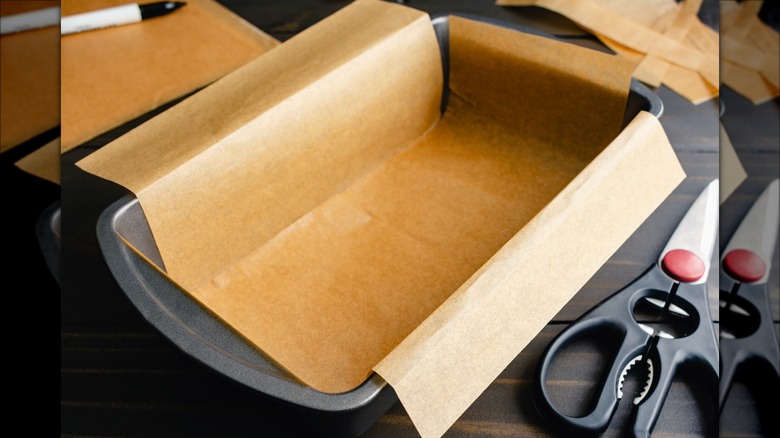Alton Brown Has The Ultimate, Mess-Free Tip For Flouring A Pan When Baking
Fans of "Nailed It!" may be all too familiar with the cringey feeling of watching a baker load an unfloured cake pan into the oven. Without flouring the pan, cake tends to cling to the baking dish like a sweet, fluffy barnacle. While "Nailed It!" turns disaster into entertainment, it's less amusing when this happens to you. Let's assume that you know the importance of flouring your cake pans and are familiar with the best method for getting a Bundt cake out of the pan. If this is the case, you also know how messy flouring a pan can be. Thankfully, Alton Brown has a helpful hack for flouring Bundt and tube pans in his book, "Alton Brown: EveryDayCook."
In general, flouring isn't difficult: Grease the pan, then coat it with a thin yet thorough dusting of flour. This second step is often accomplished by adding a few tablespoons of flour to the bottom of the pan, then tipping and tapping until it's well coated, and dumping the excess into the trash. ("Flouring" your pans with sugar is a similar, sweeter alternative.) The issue is, your kitchen may end up covered in flour, too. Cue Alton Brown's tip: To keep the everything nice and neat, place a length of clingfilm around the center column in your Bundt or tube pan, securing it with a rubber band (via Facebook). Stretch the remaining clingfilm to reach the pan's outer edge, and secure it there as well. Now you can shake the pan with abandon, even flipping it upside down, until the flour is everywhere it needs to be.
A flour-free, grease-free, mess-free option
Flouring isn't the only solution to the problem of how to pop your finished cake out of the pan without leaving bits of it behind. Lining pans with parchment paper is another popular trick, and Alton Brown's "EveryDayCook" has a useful tip for bakers going this route as well. (Note that, although parchment works well for a variety of pan shapes, Bundt and tube pans are not on that list. However, if you're using a rectangular, round, or even heart-shaped cake pan, keep reading.)
While you can butter the pan before putting the paper down to help hold it in place, Alton Brown suggests using water for this purpose if you'd like to avoid scrubbing a greasy pan later. Spray the pan with water, then lay down the parchment paper. (Check out these tips for best parchment-lining practices.) The water holds the paper in place so it doesn't shift around when you pour in the batter — which could lead to some uncovered, and therefore stick-able — spots.

